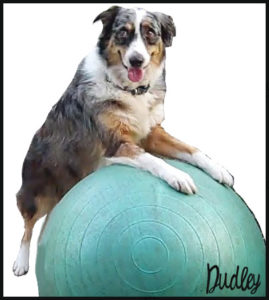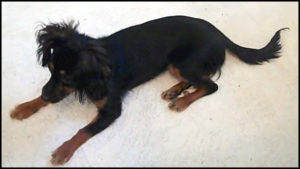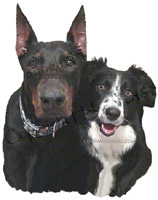When training a dog using motivation and reinforcement what two one-word questions do you think your dog will be thinking? I’ll give you a clue. They start with W.
Why and What. If your dog were to talk, those would easily be his two one-word questions to you whenever you go to train. And the answers are the trainers responsibility and so is the success of a dog training session. So be sure you know the answers before you partner up with Doggy for a lesson.
Question one: “Why?” Why should your dog do what you’re asking? Because he wants to please you? That answer is as outdated as bell bottom pants. Here’s a secret. Dogs do what pleases them. Just like the rest of us. Dogs eat, sleep and drink. They also crave attention, play, and interaction. The answer to the why question, then, is to use what your dog likes to motivate him to action. Is what you bring to the training session motivating enough to create interest in your dog to partner up and pay attention? “Why should I?” says Doggy. Because, Doggy, I have cheese, chicken, your favorite treats, or whatever yummy thing you love ready to reward you because you’re special. That’s why.
 I was teaching my own dog, Dudley, to pull a ball backwards using his two front paws. Training was going along so-so. He was getting it, but he wasn’t excited. I’d answered his “why” with dog food roll. The activity was hard and his muscles were getting a workout. Muscles he hadn’t used in quite that way before. After 5 or 6 sessions of only getting a few pulls on the ball before bailing, I changed training food. I cut up some chicken meat. What a difference that made to Dudley. My better answer to his “why,” had just increased his motivation 3-fold. Be sure to match the task to the reward. The harder the work, physically or mentally, the better and tastier the answer to your dog’s “why” should be.
I was teaching my own dog, Dudley, to pull a ball backwards using his two front paws. Training was going along so-so. He was getting it, but he wasn’t excited. I’d answered his “why” with dog food roll. The activity was hard and his muscles were getting a workout. Muscles he hadn’t used in quite that way before. After 5 or 6 sessions of only getting a few pulls on the ball before bailing, I changed training food. I cut up some chicken meat. What a difference that made to Dudley. My better answer to his “why,” had just increased his motivation 3-fold. Be sure to match the task to the reward. The harder the work, physically or mentally, the better and tastier the answer to your dog’s “why” should be.
Question two: What? What behaviors do you want Doggy to do? Once you have Doggy’s motivation at the ready, be sure that what you want him to do is clear. Teach a dog in increments that make it easy for him to succeed. If your dog walks away from you during a training session, but otherwise would eat the training food if you’d offer him one for free, then what you’re asking of him is too hard. Break the behavior down into smaller parts and build it back up.
 For example, when teaching a dog to do a down stay, start out with the down, and standing in front of the dog, take a step to the right and back again. Reward the dog. Do that until your dog can stay at least 4 times out of 5, and increase the steps to two. If your dog can stay 4 times out of 5 for two steps, increase to 3 steps. Continue doing this step by step, until you can walk around your dog. If the dog gets up, calmly reposition him and start from where you left off.
For example, when teaching a dog to do a down stay, start out with the down, and standing in front of the dog, take a step to the right and back again. Reward the dog. Do that until your dog can stay at least 4 times out of 5, and increase the steps to two. If your dog can stay 4 times out of 5 for two steps, increase to 3 steps. Continue doing this step by step, until you can walk around your dog. If the dog gets up, calmly reposition him and start from where you left off.
Training is a step-by-step process, and when you have your dog’s two questions answered before you start to train, why (why should I do this?) and what (what should I do?), then you’re well on your way to setting the foundation for a great training session. The main thing is to enjoy the time training your dog, and make sure he enjoys it too!
Helen Verte Schwarzmann
Contact me
Certified in Training and Counseling
Certified Pet Dog Trainer-Knowledge Assessed
Certified Trick Dog Instructor
Your Board-and-Train Dog Trainer for Fort Myers, Lee county, Naples, Collier county, and southwest Florida
